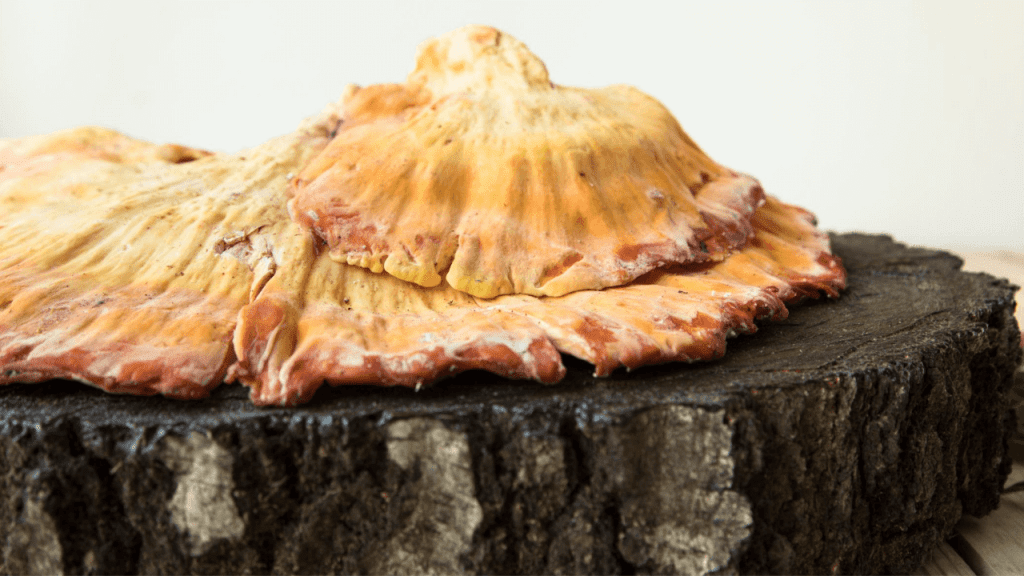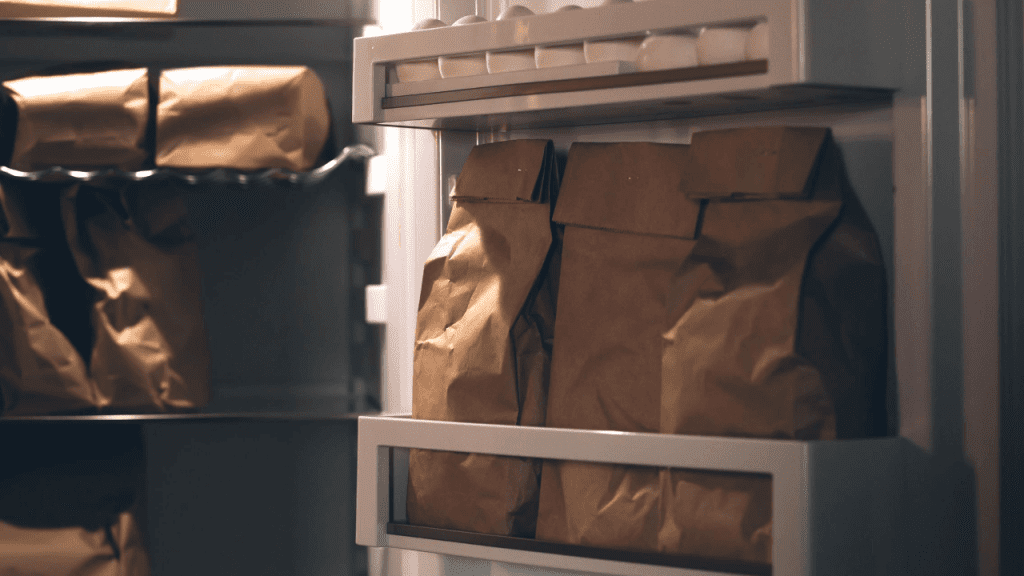See how to store Chicken of the Woods in 3 simple ways. This will help you harvest a lot and still keep your mushrooms fresh for up to 12 months.
The season for Chicken of the Woods is typically from June to December. At least you can find them growing during this time frame. That means it is available for almost 6 months out of the year.
This means you can find it fresh a lot of the time. But you still may want to have some available the other 6 months of the year to eat as well.
Another thing about the Chicken of the Woods is when harvesting there will typically be A LOT of it.
Table of Contents
How to Harvest Chicken of the Woods
You have 2 choices when you find it:
- Only harvest enough that you can eat in 7 days fresh.
- Harvest all of it and learn how to preserve Chicken of the Woods so it doesn’t go to waste.
If you choose to leave some just be aware that if someone else finds it then it will be gone or it could dry out before you are ready to harvest the rest of it.
One thing to note is that Chicken of the Woods (laetiporus sulphureus) is completely different mushroom from the Hen of the Woods (Maitake).
Before we get into how to store Chicken of the Woods, lets take a look at how to clean it before you store it…
How To Clean Chicken of the Woods Mushrooms
When it comes to cleaning the Chicken of the Woods it really doesn’t change to much from any other mushroom that you want to clean.
The main goal is to get it clean without it being wet for too long. If it is wet for to long the mushroom will start to absorb the water and get mushy.
Cleaning procedures:
- Trim away any tough or bug eaten pieces.
- Brush off as mush dirt as you can with a semi-wet mushroom brush.
- Give it a quick rinse and rub down to get any other dirt off.
- Immediately dry it completely with a paper towel (gently).
Now let’s take a look at the different options on how to store Chicken of the Woods mushroom…
How To Store Chicken of the Woods Mushroom
The method you choose in storing Chicken of the Woods mushrooms will basically depend on how long you want it to stay fresh as well as how you plan to eat it… Let’s learn more about preserving Chicken of the Woods.
1) Refrigerator

If you plan on eating your Chicken of the Woods within the next 7 days then you could use the refrigerator method.
Storing procedure:
- Place the Chicken of the Woods mushroom in into a paper bag.
- Put the paper bag into you refrigerator’s vegetable drawer.
Some people have had them last up to 3 weeks this way but after 1 week you would be pushing your luck.
If you plan to eat it all year round then you could store it in the freezer… Let’s see how to freeze Chicken of the Woods.
2) Freezer: How to Freeze Chicken of the Woods Mushrooms
If you plan on harvesting a whole lot of Chicken of the Woods for future consumption then you might want to consider freezing Chicken of the Woods. This is my favorite method!
Storing procedures:
- Cut up your Chicken of the Woods into half inch shanks.
- Place as many pieces into a big zip lock bag as you can.
- Place the bag into the freezer.
This method has been show to keep your mushrooms super fresh for up to 12 months. When your ready to eat them just take them out and throw them onto the skillet (No need to thaw them out first).
They don’t seem to lose their flavor after being frozen so you won’t have to worry about them.
The cool thing about the Chicken of the Woods is that it can be stored without cooking it first. Many mushrooms (like the button mushroom) need to be cooked prior to freezing or they will lose their texture and flavor. This one doesn’t!
3) Drying Chicken of the Woods

If you goal is to use Chicken of the Woods in Soups then you could consider using a food dehydrator to dry out your mushroom.
Drying procedure:
- Slice your Chicken of the Woods into half inch chunks.
- Place the chunks all over the dehydrator tray so they are not touching.
- Set the temperature to low and allow to run for 8 to 10 hours.
- Place the dried chunks into a sealed mason jar or a zip lock bag and keep in a cool dry place.
If you do decide to dehydrate them then you can later put them in a soup to reconstitute them. If you want to reconstitute them without putting them in a soup then you can soak them in water for 15 – 60 minutes and then strain the water out.
Conclusion
Now you should have the confidence to know how to store this choice edible mushrooms so that you can enjoy it all year round.
This means next time you are out and come across the Chicken of the Woods you don’t have to worry about harvesting more then you can eat because you know that you will have 12 months to eat what you pick.
If you will be eating your mushrooms within the next 7 days you would use the refrigerator method otherwise you would want to use the freezer or drying methods.
Once it is time to cook your mushroom you may be interested in checking out our other article on the top 3 healthy ways to cook the Chicken of the Woods here:
In that article we cover the following healthy recipes:
- Deep fried Chicken of the Woods
- Sauteed Chicken of the Woods
- Chicken of the Woods soup
This meaty textured mushroom is packed with protein, tastes like chicken and is a great substitute for meat. Don’t eat it raw though because it could cause gastric distress. It also has some pretty amazing medicinal benefits.
Thanks for reading and if you have any other ideas on how to store the Chicken of the Woods we would love to hear about it in the comments below!











































